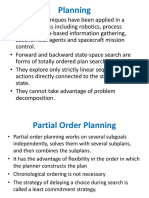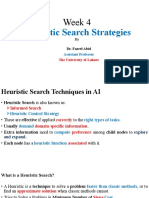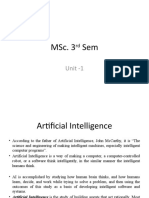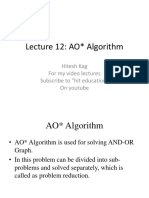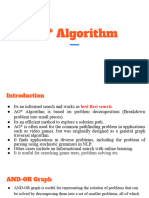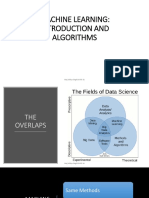0% found this document useful (0 votes)
2K views5 pagesAO Star Algorithm
The document discusses AO* search, an algorithm for searching AND-OR graphs. AO* search uses OPEN and CLOSE lists like A* to track nodes. It selects the most promising solution tree at each step. If the selected node is the goal, its ancestors are marked solved. If not solvable, it is marked unsolved. The node is then expanded, successors evaluated and added to OPEN. The algorithm exits if the start is marked solved or unsolved. An example implementation is provided. Advantages include being optimal and handling both AND and OR graphs. A disadvantage is potential to not find optimal paths for unsolvable nodes.
Uploaded by
Mitesh VyasCopyright
© © All Rights Reserved
We take content rights seriously. If you suspect this is your content, claim it here.
Available Formats
Download as PDF, TXT or read online on Scribd
0% found this document useful (0 votes)
2K views5 pagesAO Star Algorithm
The document discusses AO* search, an algorithm for searching AND-OR graphs. AO* search uses OPEN and CLOSE lists like A* to track nodes. It selects the most promising solution tree at each step. If the selected node is the goal, its ancestors are marked solved. If not solvable, it is marked unsolved. The node is then expanded, successors evaluated and added to OPEN. The algorithm exits if the start is marked solved or unsolved. An example implementation is provided. Advantages include being optimal and handling both AND and OR graphs. A disadvantage is potential to not find optimal paths for unsolvable nodes.
Uploaded by
Mitesh VyasCopyright
© © All Rights Reserved
We take content rights seriously. If you suspect this is your content, claim it here.
Available Formats
Download as PDF, TXT or read online on Scribd
/ 5



















